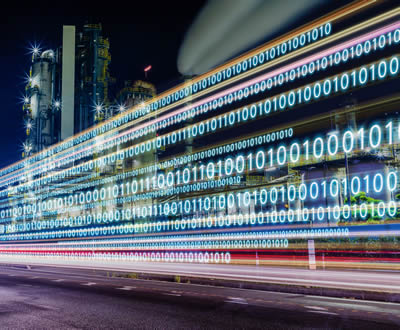Digitalization
We have set ourselves the goal of supporting our customers on their way to successful and sustainable digitalization within the framework of Industry 4.0 and AI use. Industry 4.0 and digitalization are current topics for many companies today. An early debate is not only important, but may be existential. For example, if you lose ground to global competition or if the business environment changes.
As you know, change in all areas is extremely rapid – many companies see major and growing challenges here, but also potentials to maintain their competitive position or strengthen them in the long term.
Not all digitization measures make sense for every company. Through our in-depth analysis, we identify the measures that are most important to your business and provide your customers with value.
We support you as follows:
- An inventory of the current situation with regard to the current industry 4.0 implementation
- Analysis and evaluation of the current situation
- Brainstorming (creativity) for products and for production processes
- Evaluate ideas and identify next steps
- Revise strategies
- Develop new business cases resulting from workshops to realize competitive advantages in the market
Examples of Industry 4.0 applications in After Sales and Operations:
Analysis units
Preliminary maintenance with digital analysis units on site. Analysis and observation of machines and components by sensors that record vibrations, temperatures and magnetic fields. Own data analysis or by external providers.
Advanced Planning & Scheduling (APS)
This configures, plans and controls the supply chain from raw material suppliers to the customer (fine planning and scheduling) and thus transparently mapped (improved information supply). In contrast to traditional production planning and control, not only the resources in production, but also the transport and warehousing are optimized within the framework of supply chain management.
Digital image processing / pattern recognition
With modern methods of image processing, objects are counted, measured and inspected. Many tasks can be automated and various parameters can be objectively extracted from images. Detecting shapes, measuring objects, or determining color differences. E.g. in quality assurance in- and offline.
Digital planning tools
Better organize possible routes to the customer, improve the planning of service technicians to identify where customers are geographically located regionally.
Digital maintenance
Using up-to-date, available tools to perform the maintenance of older analog systems safely and sustainably, in order to ensure a high uptime, store maintenance centrally and detect any problems that may have arising at an early stage.
Digital Twin
A digital twin depicts the entire production process and enables direct intervention in production at any time. Real and virtual production merge into an intelligent overall system. The application can be applied throughout the entire life cycle (design, operation, reuse). For example, simulation supports planning, performs optimizations or enables convertible production.
Use of mobile devices in production
Tablets, smartphones, data glasses and hand projection are increasingly becoming an integral part of production scenarios (augmented and virtual reality). With the advent of augmented and virtual reality, great opportunities are associated. For example, Augmented Reality offers the possibility to train employees in a focused manner or to design workplaces ergonomically or to support the production staff in testing and assembling components. Tablets, data glasses and hand projection have the potential to support the employee in his activities in production and field service.
Supplier search and evaluation
These known processes are easily automatable because they are associated with highly repetitive activities. The required data is usually obtained from the ERP systems, but also, for example, through approaches of the AI – from the Internet.
Manufacturing Execution Systems (MES)
Data collection and processing (BDE, MDE, personal data) is used in real time to control and control (planning & feedback of processes) as well as an optimization of production.

